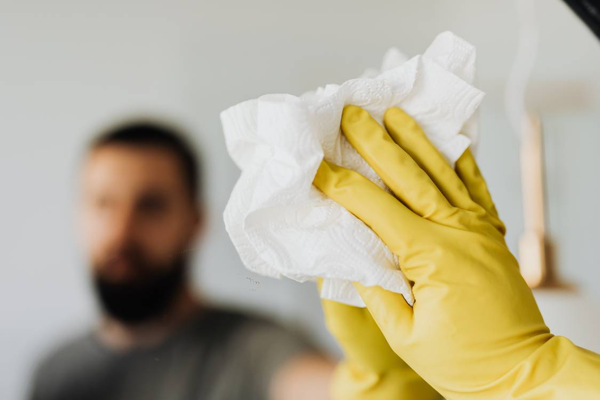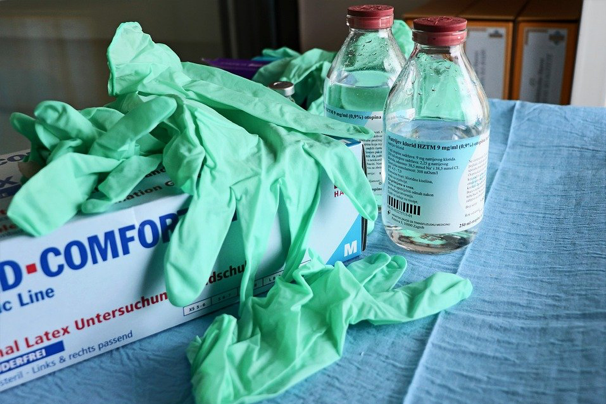Call Today to Schedule an Appointment: 212-319-5282
What Is A Latex Allergy?
What is a latex allergy? Manufacturers make latex from a rubber tree, and it includes various proteins that can trigger an allergic reaction. Latex is not a harmful substance, but when you have a latex allergy, your immune system considers the material to be harmful. A latex allergy can induce reactions that include hives and itchiness. Other than that, this allergy can also lead to anaphylaxis and have a life-threatening effect on your body. When you have anaphylaxis shocks, you will find it difficult to breathe as your throat will swell. An immunologist can diagnose and identify if you have a latex allergy. They can also identify if you’re at risk of developing one. You can prevent allergic reactions and serious consequences by understanding more about this condition. This article will help you understand more about latex allergy.

(Source)
Symptoms of a Latex Allergy?
When your body comes in contact with latex, you may experience an allergic reaction at the region of contact. You can call this rash or dermatitis. Here are some of the symptoms of latex allergy so that you can identify this health condition:
- Eczema (cracking and weeping skin)
- Hives
- Skin rash
- Itchy hands
These are temporary reactions and will go away naturally over time. The proteins in latex also become airborne. When this happens, the person allergic to it inhales and develops a severe condition. Symptoms of this condition are:
- Dizziness
- Rapid heartbeat
- Vomiting
- Diarrhea
- Abdominal pain
- Shortness of breath
- Stuffy or runny nose
- Red skin
- Tongue, lips, and skin swells
Causes
Your body considers latex as a threat to the body and triggers immune cells or antibodies to fight. When you face latex exposure again, antibodies signal the immune system that something is not right. Your body’s immune system releases chemicals, including histamine, which results in various symptoms. The symptoms grow worse if you are continuously in contact with latex. This condition is called sensitization. Latex will affect your body in different ways, depending on the condition. Below you will find those ways:
Through Direct Contact
This is the common reason to develop latex allergy. When you touch the latex material, you start reacting to the protein components. The items include balloons, condoms, and latex gloves.
Through Inhalation
All latex products, especially gloves, release airborne particles. When you inhale those protein particles, your immune system starts reacting, causing an allergic reaction. The quantity of airborne particles differs from one brand to another.
Manufacturers develop various latex products from man-made latex or synthetic latex, such as latex paint, which is mostly non-allergic.
Latex Allergy Diagnosis
Whether you develop any symptoms of an allergic reaction or not, your blood or skin tests will indicate if you are suffering from latex allergy. An immunologist will diagnose you by asking about any symptoms and conducting tests. Symptoms of an allergic reaction include trouble breathing, irritation, teary eyes, hives, skin rashes, and itching upon contact with latex or other rubber products. They will also perform various skin tests to check if you really have a latex allergy.
Treatment for Latex Allergy
Unfortunately, there is no treatment for this allergic condition. When you have a latex allergy, the only way to avoid any reaction is by preventing contact with the material. If you experience serious skin irritation, you can take corticosteroid medicines or antihistamines. However, if your condition is severe, you can control the reaction through IV fluids, epinephrine, and consulting a medical professional such as an immunologist. Some immunologists also recommend carrying epinephrine shots in case of an emergency. Other than that, you should carry around a card or a tag that informs passersby about your latex allergy.

(Source)
Visiting the Doctor
When you make an appointment with an immunologist or doctor, you need to inform them about your latex allergy. This way, your physician or dentist will avoid using any instrument that contains latex, such as gloves, etc. If your health condition requires that you stay in the hospital, they will keep you in a separate room without any product containing latex.
Food Triggers
Some fruits and vegetables contain proteins similar to those of latex. That can also trigger Latex allergy when you touch, smell, or eat that food. Some of these foods include wheat, tomato, potato, pineapple, hazelnut, kiwi, grape, cherry, banana, avocado, and many more.
Conclusion: Contact Top NYC Allergist Boyan Hadjiev
Sometimes, latex allergy triggers anaphylaxis, which can be life-threatening. In this condition, your esophagus swells, and you will experience difficulty in breathing. While experiencing an allergic reaction, you should immediately visit an immunologist as they are experts in handling and treating conditions related to the immune system.
You can contact our offices to make an appointment with a professional immunologist. We also provide telemedicine so that you can avail of treatment through online live video chat and consult with Dr. Boyan Hadjiev instantly or call us at 212-319-5282.
Sources
https://www.mayoclinic.org/diseases-conditions/latex-allergy/symptoms-causes/syc-20374287
https://www.webmd.com/allergies/latex-allergies
https://www.healthline.com/health/allergies/latex#symptoms
Serving all of New York City and the Tri State Area including Zip Codes: Top Allergist NYC Midtown, Chelsea and Clinton: 10001, 10011, 10018, 10019, 10020, 10036 | Gramercy Park and Murray Hill: 10010, 10016, 10017, 10022 | Greenwich Village and Soho: 10012, 10013, 10014 | Lower Manhattan: 10004, 10005, 10006, 10007, 10038, 10280 | Lower East Side: 10002, 10003, 10009 | Upper East Side: 10021, 10028, 10044, 10128 | Upper West Side: 10023, 10024, 10025
